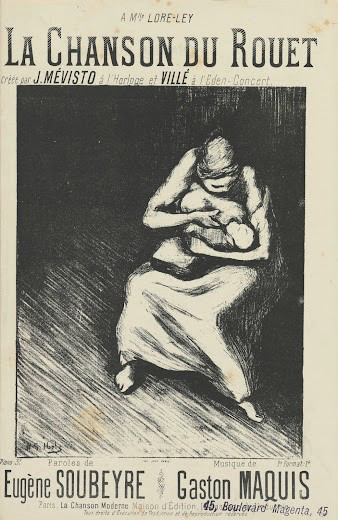
89. Henri Gabriel Ibels, Mother and Child
| Artist | Henri Gabriel Ibels, French, Paris 1867–Paris 1936 |
| Title, Date | Mother and Child, c. 1892 |
| Medium | Pastel on tan paper, laid down on board |
| Dimensions | 16 1/16 × 12 7/8 in. (40.8 × 32.7 cm) |
| Inscriptions + Marks | Lower right in blue pastel: H.G. Ibels | Paper label on verso: 56 La Toilette du matin. Pastel |
| Provenance | [Marcel Lecomte, Paris, until mid-1970s; to Weisberg]; Yvonne and Gabriel Weisberg, Minneapolis |
| Exhibition History | "Expanding the Boundaries: Selected Drawings from the Yvonne and Gabriel P. Weisberg Collection," Mia (2008) and Snite Museum of Art, Notre Dame, Ind. (2010); "Children in Paris: The Birthday Boy and Friends," Mia, 2017; "Reflections on Reality: Drawings and Paintings from the Weisberg Collection," Mia, 2022–23 |
| References | Lisa Dickinson Michaux with Gabriel P. Weisberg, "Expanding the Boundaries: Selected Drawings from the Yvonne and Gabriel P. Weisberg Collection" (exh. cat.), Minneapolis Institute of Arts (Minneapolis, 2008), pp. 43–44, fig. 24 |
| Credit Line | Promised gift of Gabriel P. and Yvonne M.L. Weisberg, Minneapolis |
While a student at the Académie Julian, in Paris, Henri Gabriel Ibels became a founding member of the Nabis, a group led by his teachers Pierre Bonnard and Edouard Vuillard. Though he did not adopt the spiritualism of his fellow Nabis (the name is Hebrew for “prophet”), he was attracted to their interest in the simplification of form, focus on daily life, and fascination with Japanese woodcuts. His dynamic images of Parisian streets, theaters, and cafés earned him some notice and a nickname—“le Nabi journaliste.” Best known for his posters, caricatures, and satires, Ibels also made designs for theater and, particularly relevant to this drawing, sheet music. Active in left-wing politics, he rose to the defense of Alfred Dreyfus in the infamous Dreyfus affair of the 1890s, which concerned the false accusations of treason against a Jewish army captain.

This pastel, made early in Ibels’s career, is unusual in its departure from Nabi aesthetics—especially in not flattening the figure into an overall decorative scheme. Mother and Child is closer to the tradition of the French pastellistes, an informal group that held public exhibitions of their color drawings. They became quite prevalent as a movement during the 1890s. Mother and Child would have been welcomed into their shows because of the intimate theme and the choice of medium. A label on the verso of the drawing’s mount reveals that it was included in an exhibition in Paris, probably during the 1890s or early 1900s.1
The work appears to relate to Ibels’s sheet music cover for La Chanson du Rouet (The Song of the Spinning Wheel) (fig. 1).2 The lyrics give voice to a woman considering her future as a mother, but they were sung by a man—almost certainly in a tone of mockery. The song was published in 1892, thus suggesting an approximate date for the pastel. The constraints of a commission related to a specific piece of music could explain Ibels’s unexpected choice of subject and the subdued tenor.
GPW
Notes
There were several Ibels exhibitions in Paris, including the Exposition H. G. Ibels à la Bodinière, in 1894, and two exhibitions (with items for sale), in 1898 and 1899. The catalogues do not contain a work called La Toilette du matin, which is the title inscribed on the verso of this drawing’s mount. The drawing could have appeared in an as-yet-unidentified group show. ↩︎
La Chanson du Rouet, lyrics by Eugène Soubeyre, music by Gaston Maquis (Paris: La Chanson Moderne, 1892). See Gérard Millot, “Henri-Gabriel Ibels, Nabi illustrator of songs, catalogue raisonné of his music sheets,” Zimmerli Journal, no. 3 (Fall 2005), pp. 198–215, no. 41. The song was performed by Jules Mévisto (stage name of Jules Joseph Wisteaux, 1857–1918), for whom Ibels made posters. ↩︎